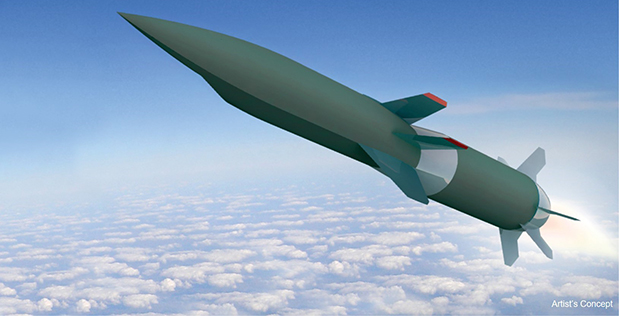Deputy Defense Secretary Kathleen Hicks urged Congress to be more patient with the Pentagon as it develops new systems, like hypersonic missiles.
Speaking during an April 12 Defense Writers Group breakfast, Hicks touted the recent successful test of the Lockheed Martin version of the Hypersonic Air-breathing Weapon Concept (HAWC), which set a new record for hypersonic flight under scramjet power. The March flight test likely achieved about 327 seconds of hypersonic flight under scramjet power, versus 200 seconds achieved by the Boeing X-51 Waverider in 2010, based on figures provided by the Defense Advanced Research Projects Agency.
Despite multiple failures of the Air Force’s AGM-183 Air-launched Rapid Response Weapon (ARRW), Hicks said “the biggest concern I would have right now” is that the U.S. “used to be first in class” at a willingness to “test, learn a little, test, fail, learn some more.”
The Pentagon sees “real resistance … on Capitol Hill” to that approach, “and so you get curtailment of programs, … concerns over concurrency, concerns about technically risky approaches.”
The U.S., she said, “has to be willing to fail. I think this is a place we want to increase the trust the Congress has in the Department, as it goes after improvements and capabilities.”
She added that it’s not the Defense Department’s approach to hypersonics to “match dollar for dollar, …or munition-to-munition” with adversaries.
“It is to understand how hypersonic systems fit into the way in which we would prosecute the most effective operations,” she said. “That’s really important to understand.”
Asked if she favors curtailing any hypersonics programs and advancing others that have been more successful, Hicks said, “I think we were pretty clear in our budget request about that portfolio. I’ll let that stand.”
The Air Force’s 2023 budget request emphasizes HAWC over the boost-glide AGM-183A Air-Launched Rapid Response Weapon, or ARRW, but USAF budget director Maj. Gen. James D. Peccia III said the service is “not walking away” from ARRW—yet. Peccia said the service is continuing to assess that program.
Hicks also cited “good conversations” with the Air Force and Northrop Grumman at the B-21 factory in Palmdale, Calif., last week, saying she can report that the program is on time “and there are no barriers …to get in the way of Northrop staying on schedule.”
The B-21 is “a good exemplar—but not the only one—where we’re seeing the promise of ‘digital thread’ [methods] both on cost and schedule.” The program will be studied to “see what we can learn from” that approach to provide better value to the taxpayer, she said.
Hicks was asked where her next trip will be to, and she said “back to California, … very soon,” possibly indicating that the rollout of the B-21, predicted for the April/May timeframe, will happen on schedule.

